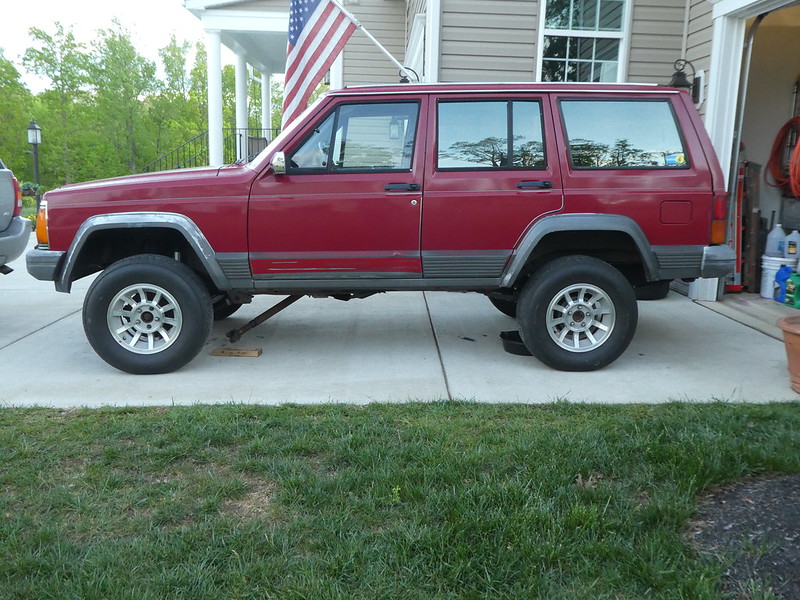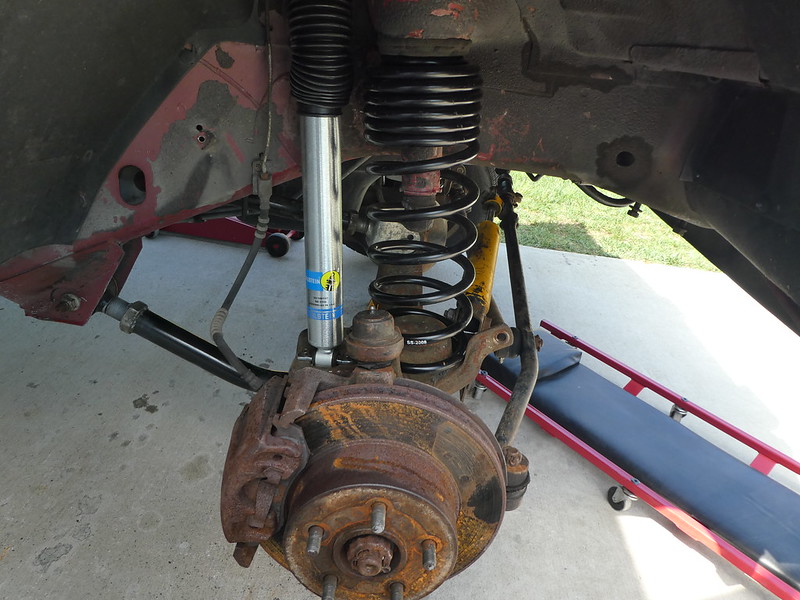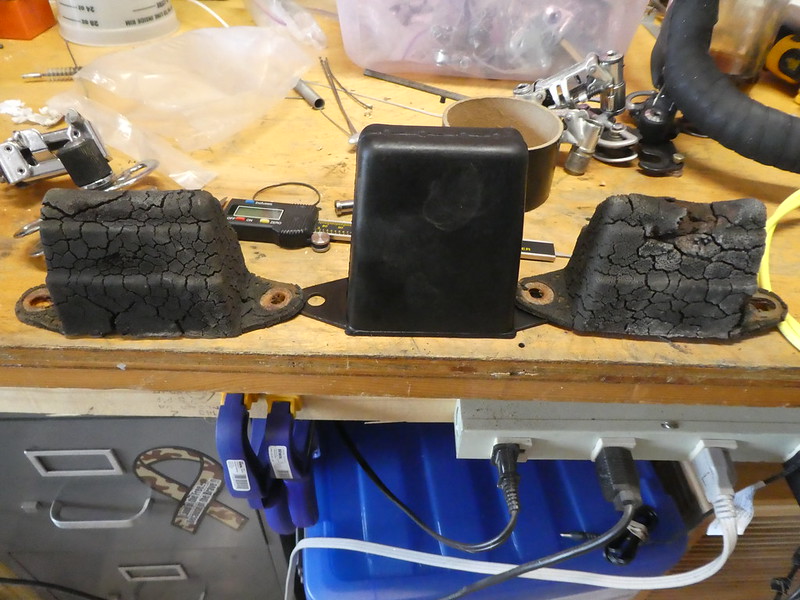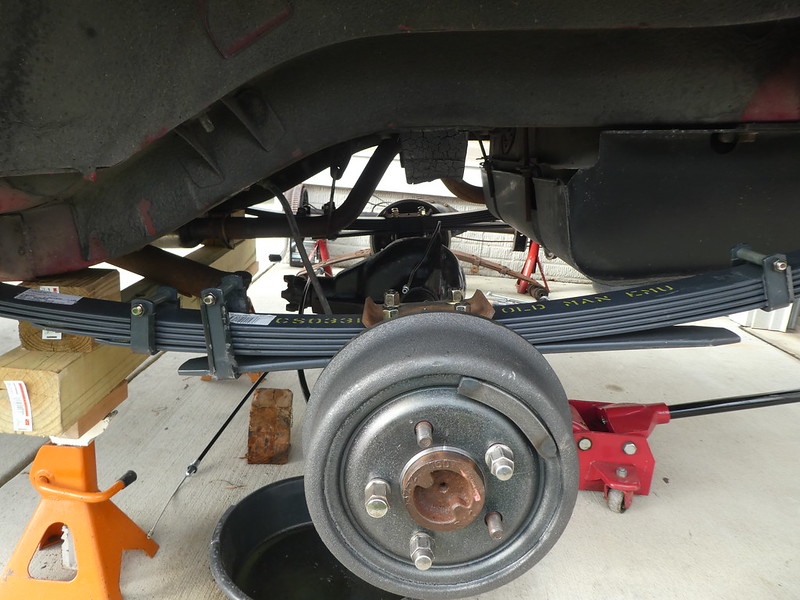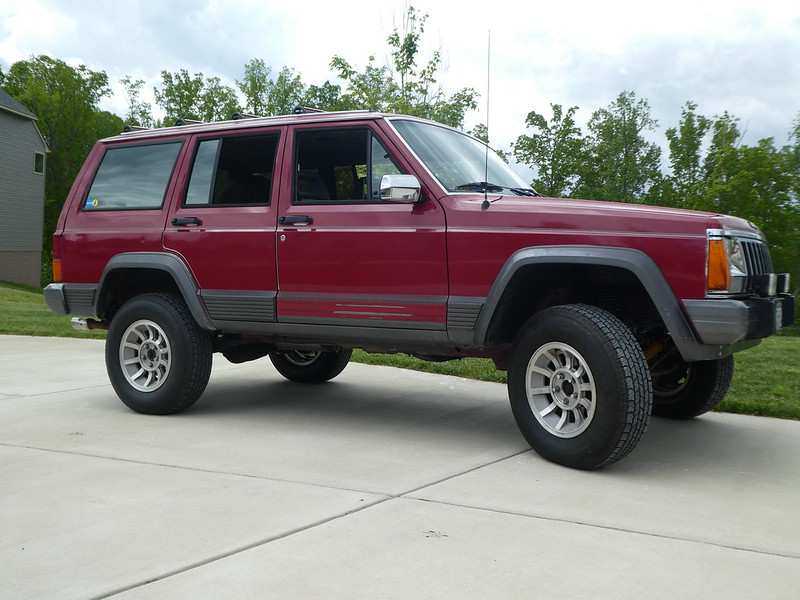sjx40250
NAXJA Forum User
- Location
- Alexandria VA
Been on this forum for a long time. It has been the first goto sight when any XJ issues come up, curiosity about others issues, and general learning.
My 1990 Jeep was bought new in May of that year. 5 years later I was keen to lift it. This weekend is the realization of that desire.
I went with OME rear leafs CS 330rb. I did not remove a leaf. Going to put lots of weight in it for a period to get it to settle. The only hitch in the installation was the brake line. Just a little too short. So it is floating just above the axle with tie straps limiting the lines after the T. Also the bolt is a different size. will likely get a new line.
The front is were I am at now. I purchased IRD control arms several years ago along with an adjustable track arm. so I was ready for the Springs. Choice was Metacloak.
Bilsteins 5100 all the way around.
Installation was a bit challenging. I got the sequene wrong and my axle started skewing to the rear. I removed th lowers. mistake. I digress.
My question at this point is the sequence and method for adjustment of the axle location and castor/pinion. Here is my thnking:
1) Adjust the wheelbase to stock with the new lift. 101.4 inches. get there by adjusting both upper and lower.
2) Adjust pinon angle/castor - Adjust both upper and Lower or upper to rotate CCW from DS or lower to adjust CW. I figure the impact to WB is minor.
3) Adjust toe in
4) Adjust track arm - use the string method by checking alignment with rear tires and front tires.
5) add shocks and tighten everything to spec.
6) Add anti-sway bar and QD's
Could you confirm or make recommendations of the right way to do this and any "gotcha's?"
Front brake lines are remounted with the curves straightened to allow for flex.
A couple of discoveries along the way were a down pipe with additional clearance from the universal joint it was next to. The replacement track bar was rubbing on the dif cover. When the control arms were replaced, they were set to the same length as the stock ones, since no lift was added other than an addition cup at the top of the springs to make up for the overload springs on the back.
Comments please!
My 1990 Jeep was bought new in May of that year. 5 years later I was keen to lift it. This weekend is the realization of that desire.
I went with OME rear leafs CS 330rb. I did not remove a leaf. Going to put lots of weight in it for a period to get it to settle. The only hitch in the installation was the brake line. Just a little too short. So it is floating just above the axle with tie straps limiting the lines after the T. Also the bolt is a different size. will likely get a new line.
The front is were I am at now. I purchased IRD control arms several years ago along with an adjustable track arm. so I was ready for the Springs. Choice was Metacloak.
Bilsteins 5100 all the way around.
Installation was a bit challenging. I got the sequene wrong and my axle started skewing to the rear. I removed th lowers. mistake. I digress.
My question at this point is the sequence and method for adjustment of the axle location and castor/pinion. Here is my thnking:
1) Adjust the wheelbase to stock with the new lift. 101.4 inches. get there by adjusting both upper and lower.
2) Adjust pinon angle/castor - Adjust both upper and Lower or upper to rotate CCW from DS or lower to adjust CW. I figure the impact to WB is minor.
3) Adjust toe in
4) Adjust track arm - use the string method by checking alignment with rear tires and front tires.
5) add shocks and tighten everything to spec.
6) Add anti-sway bar and QD's
Could you confirm or make recommendations of the right way to do this and any "gotcha's?"
Front brake lines are remounted with the curves straightened to allow for flex.
A couple of discoveries along the way were a down pipe with additional clearance from the universal joint it was next to. The replacement track bar was rubbing on the dif cover. When the control arms were replaced, they were set to the same length as the stock ones, since no lift was added other than an addition cup at the top of the springs to make up for the overload springs on the back.
Comments please!



